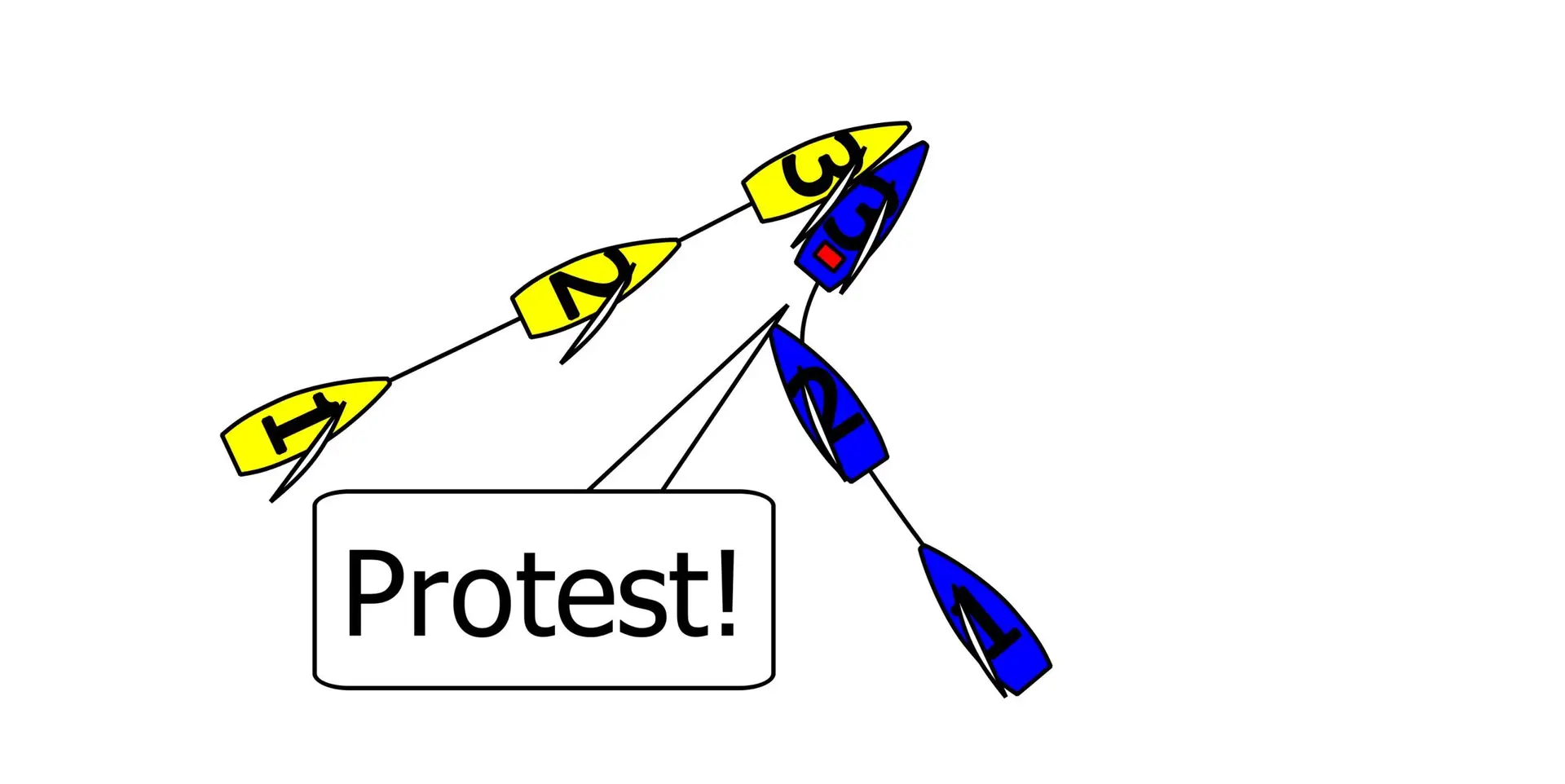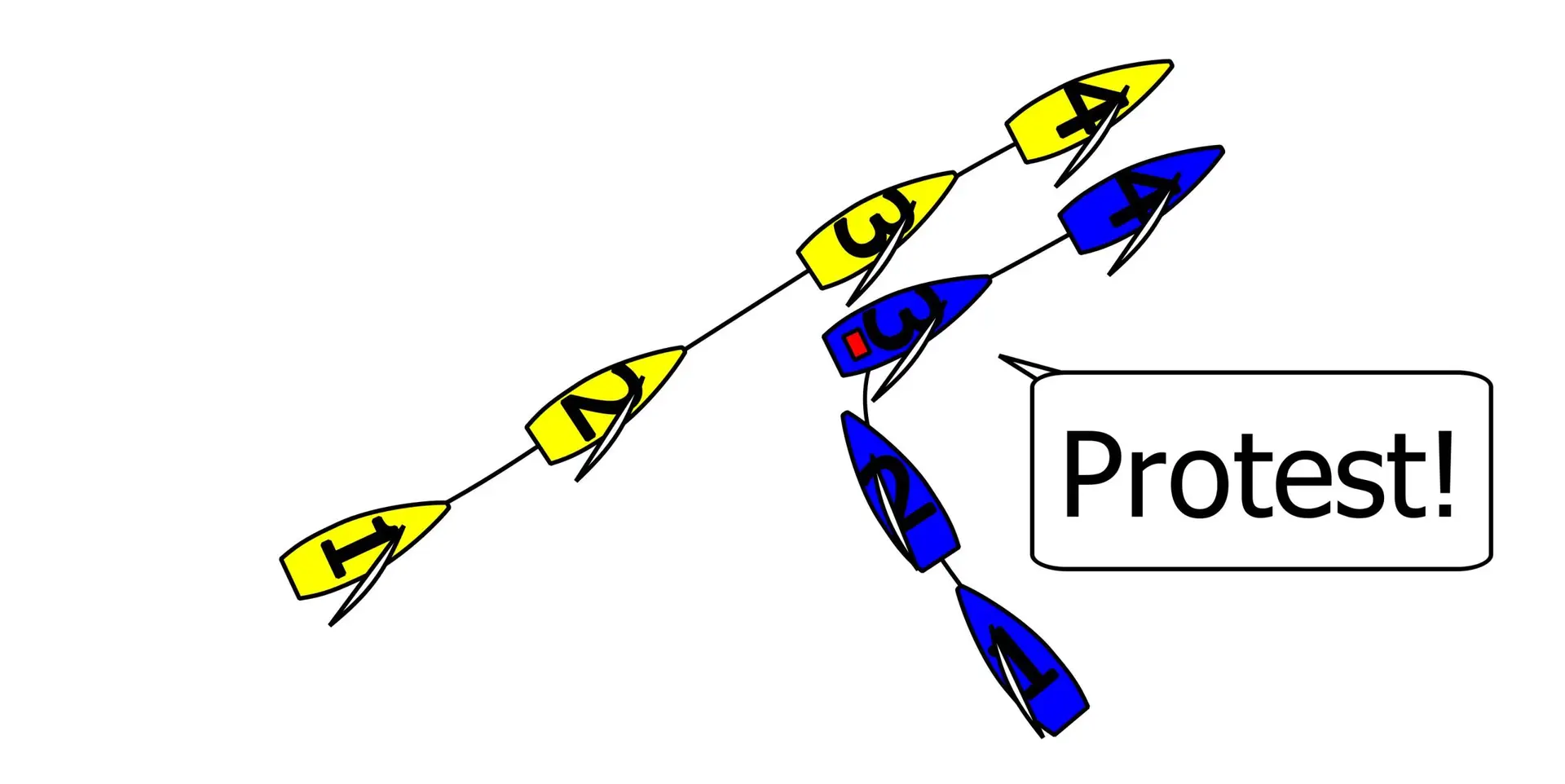Let’s look at what Rule 14 says:
Avoiding Contact
“A boat shall avoid contact with another boat if reasonably possible. However, a right-of-way boat or one sailing within the room or mark-room to which she is entitled need not act to avoid contact until it is clear that the other boat is not keeping clear or giving room or mark-room.”
The main reason for Rule 14 is to prevent damage or injury, and it trumps “right of way”. Nevertheless, you don’t need to react until you see that the other boat is not keeping clear. The idea is not to “take” right of way; otherwise, you can be disqualified irrespective of who is at fault. If it was reasonably possible to avoid contact, you are automatically penalised. However, you may be exonerated under Rule 43 if there is no damage or injury.

Contact
In example 1, at point 1, we see a potential collision course between Yellow (on a port tack) and Blue (on a starboard tack). Under Rule 10, Yellow is required to keep clear of Blue. Blue can assume that Yellow will keep clear until it becomes evident that Yellow is not keeping clear. Although not required within the rules, Blue may hail “starboard” or take some alternative action to ensure Yellow is aware of its obligations to keep clear. Perhaps this proactive action falls within the phrase “take reasonable action to avoid contact”, as this reasonable action may be proactive or reactive.
At point 2, it is becoming evident that Yellow is not keeping clear of Blue and is about to break Rule 10.
At this time, Blue is in a position to avoid contact and could either quickly tack and protest or sail under Yellow and protest.
However, Blue leaves it too late and collides with Yellow. This disqualifies both Yellow and Blue.
However, if there is no damage or injury, Blue may be exonerated under Rule 43

Avoiding contact
In example 2, we see a similar situation, but the action of Blue arguably avoids contact so she complies with Rule 14. This is a much more common situation. The subsequent protest must consider both Blue and Yellow’s evidence.
Blue, on starboard tack, need not hold her course to prove, by colliding with Yellow on port tack, that a collision was inevitable. If Blue does this she will break rule 14. Blue must establish either that contact would have occurred if she had stayed on her course or that there was enough doubt that Yellow could safely cross ahead to create a reasonable anticipation of contact on Blue’s part and that it was unlikely that Blue would not need to “take avoiding action” to avoid contact.
On the other hand, Yellow must provide evidence to show either that Blue did not change course or that Yellow would have safely crossed ahead of Blue and that Blue had no need to take avoiding action.
Rule 14 key points:
- Preventing damage or injury
- Rule 14 trumps right of way.
- Protest – don’t “take” right of way.
- You don’t need to react until you see that the other boat is not keeping clear.
- If it was reasonably possible to avoid contact, then you are automatically penalised. (No damage or injury –exoneration under Rule 43)

